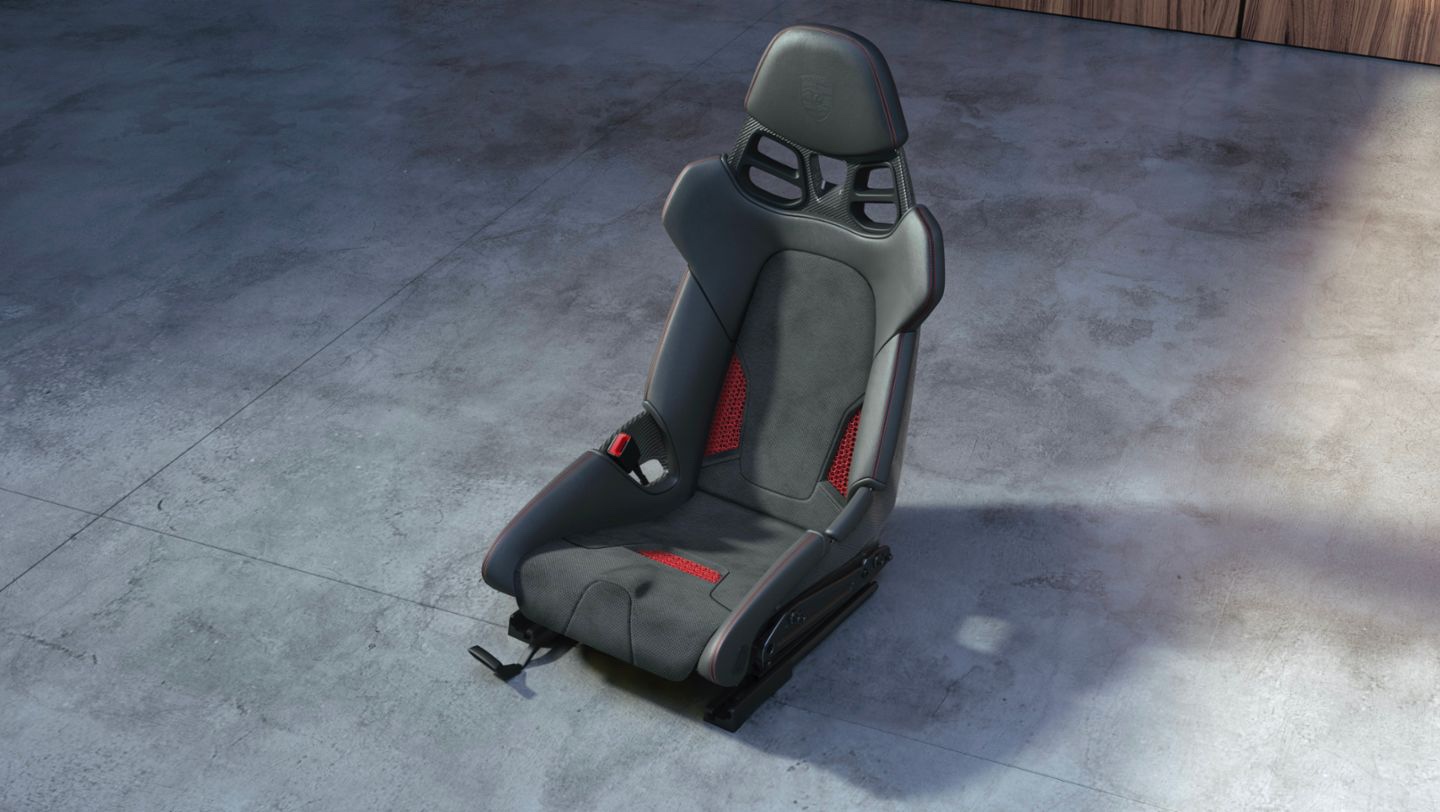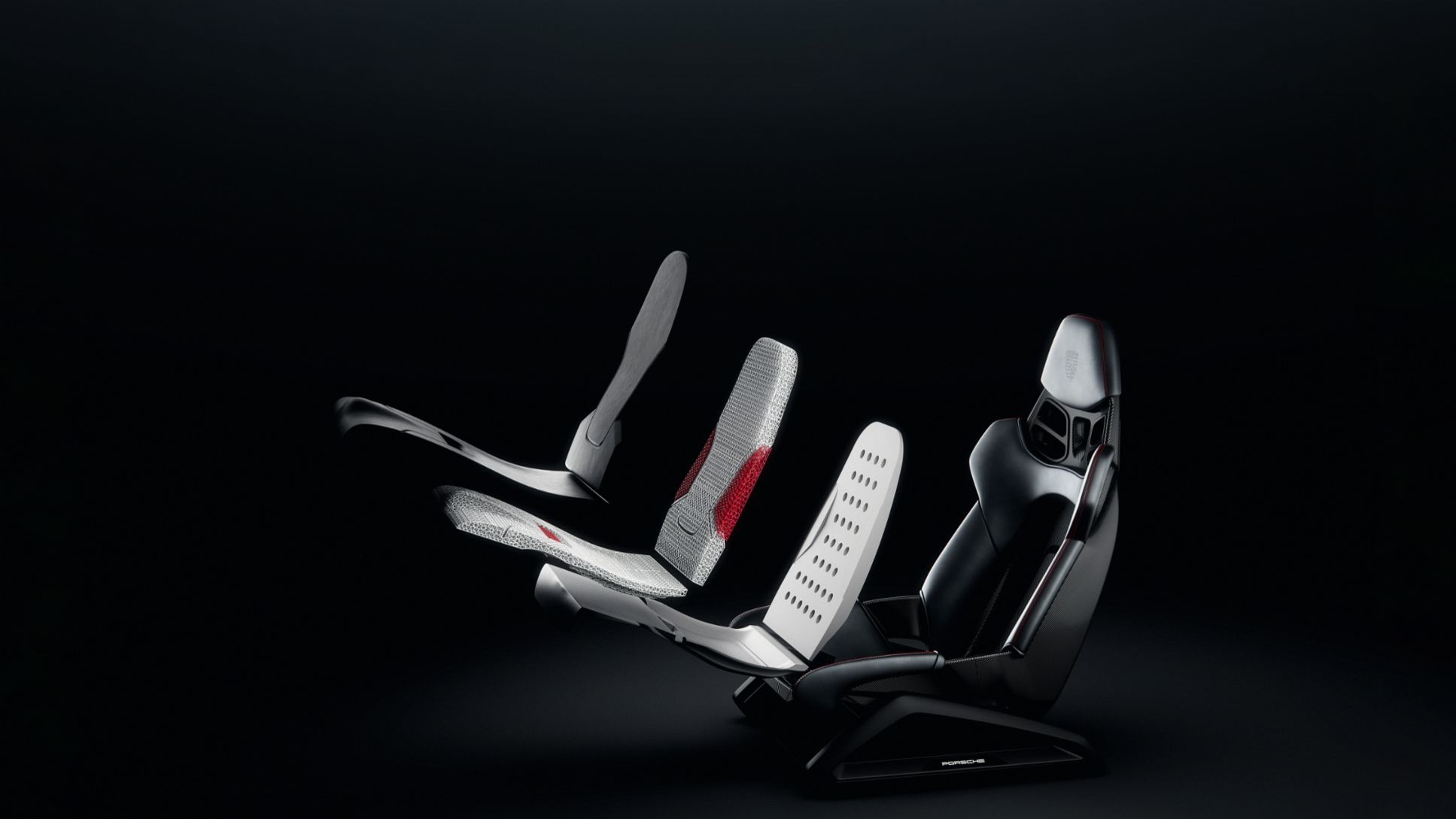In March 2020, German automaker Porsche announced that it would begin testing a new production concept: partially 3D printed bodyform bucket seats. Now, it appears that the trajectory from the testing to the production phase will total just under two years, as Porsche is now announcing the sales launch of this product. It will be offered to customers upon request on the Porsche Tequipment site for the Boxster, Cayman, and 911 models. Moreover, starting early next year, the company will present its new design to a broader audience, as it plans to add the 3D printed seats as a standard feature on Porsche Exclusive Manufaktur—the brand’s personalization program—in February 2022, at which point it will also become part of the Porsche Car Configurator.
“Seats adapted to individual drivers have been available for a long time in professional motorsport. Now Porsche also offers a road-approved customisation with different rigidity grades as standard,” notes German race car driver Lars Kern, one of many customers chosen by Porsche over the past couple years, at various car exhibitions, to be a test driver. “During the initial test drives I was impressed by the ergonomics – the slightly lower seat position and improved thigh support are similar to what you get from a seat in a racing car. The passive ventilation is impressive too.”

Parts of the cushion and backrest are 3D printed from a combination of polyurethane-based materials. One of the benefits of this is that the parts made using AM come in three different rigidity grades that customers can choose from. They’re then clipped together with the rest of the seat, which, the company notes, results in a product that generates none of the emissions associated with the adhesives used in conventional car production. Additionally, the 3D printed seats are over 8% lighter than their conventionally manufactured counterparts.

The approach Porsche has taken here to test its concept is especially important to pay attention to. It’s quite noteworthy to look at a company’s press release, for instance, and see a quote from an actual customer rather than a CEO or an engineer. This is an advantage that car manufacturers have: getting timely feedback directly from actual consumers of their brand. For one thing, this helps a great deal from the standpoint of quickly and continuously integrating customers’ responses into the research and development process.
Also, since the factor of brand loyalty matters to makers of luxury vehicles more so, perhaps, than it does to any other industry, feedback garnered from this type of research can be counted on to be a more reliable indicator of actual, future business results than it would in other contexts. In other words, if the people who tested the product like it, as in this case, you can expect actual customers to respond similarly. Thus, Porsche’s particularly clever focus group strategy may be largely responsible for its quick movement from conceptualization to execution on this project.
In general, German automakers seem to be ahead of the curve when it comes to building AM into their mass production plans. For example, drivers of the BMW Mini have been able to customize aspects of their seats since 2018 thanks to features designed and build with 3D printing technology. Similarly, Volkswagen announced earlier in 2021 that by 2025, it expects to 3D print 100,000 parts per year. So while the US and China seem to be doubling down repeatedly on applying AM to aerospace and defense, Germany appears to be taking the lead on innovations for the direct-to-consumer market. If industrialization’s past is any indication of its future, this could prove to be a smart move in the long run.
Subscribe to Our Email Newsletter
Stay up-to-date on all the latest news from the 3D printing industry and receive information and offers from third party vendors.
You May Also Like
Why Corrosive Resistant Materials Are Important to the Success of 3D Printing Across Industries
The adoption of additive manufacturing (AM) is accelerating across many major industries. As this technological shift unfolds, the importance of corrosion resistance has emerged as a challenge for 3D printing...
America Makes Announces IMPACT 2.0: $6.6M in New 3D Printing Funding
America Makes, the Manufacturing Innovation Institute (MII) based in Youngstown, Ohio, has announced IMPACT (Improvement in Manufacturing Productivity via Additive Capabilities and Techno-Economic Analysis) 2.0, a project call which will...
3D Printing Webinar and Event Roundup: April 14, 2024
We’re starting off the week’s 3D printing webinars and events at ASTM AMCOE’s 11th Snapshot Workshop and MACH Exhibition. Stratasys continues its advanced training courses, SME is holding a virtual...
AMUK Welcomes Airframe Designs as British 3D Printing Industry Grows
While the UK is not the hub for 3D printer and materials manufacturers as other nations, the country continues to excel at the research, development, and application of additive manufacturing...































